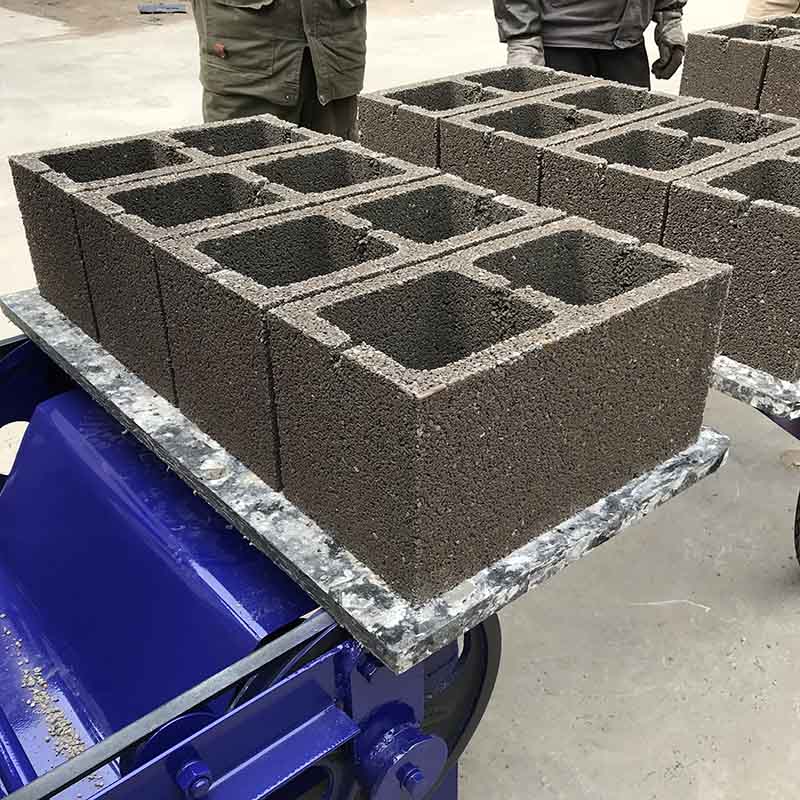
Image source:Aiweiblockmachine
Introduction
South Africa’s construction industry is undergoing a profound transformation, driven by rapid urbanization, infrastructure development, and a growing emphasis on sustainable building practices. At the core of this evolution lies the brick making technology, a critical component that lays the foundation for the nation’s progress. In this article, we delve into the realm of brick making technology advancements in South Africa, exploring innovations that are reshaping the way bricks are produced, their quality, sustainability, and their role in shaping the construction landscape.
1. Sustainable Raw Materials: Reimagining the Building Blocks
Traditionally, brick making has relied heavily on clay, often leading to environmental degradation, habitat destruction, and resource depletion. However, advancements in brick making technology are redefining the raw materials used in the process.
Alternative Materials: Researchers and manufacturers are exploring alternative materials that are eco-friendly and readily available. Stabilized soil, fly ash, quarry dust, and waste materials like rice husks are being integrated into brick production, reducing the reliance on traditional clay.
Benefits: These alternative materials not only conserve natural resources but also enhance the thermal insulation properties of bricks. Moreover, utilizing waste materials addresses waste management concerns and aligns with the circular economy principles.
2. Interlocking Brick Technology: A Sustainable Revolution
Interlocking brick technology has emerged as a groundbreaking innovation in the South African construction landscape, fundamentally transforming the way bricks are manufactured and used.
Design and Assembly: Interlocking bricks are designed with protrusions and grooves that enable them to fit together like puzzle pieces, eliminating the need for mortar. This innovative design simplifies construction and accelerates the building process.
Sustainability: Interlocking brick technology significantly reduces cement consumption, a major contributor to carbon emissions in traditional construction. The absence of mortar also means less water usage during construction, further enhancing sustainability.
3. High-Pressure Hydraulic Pressing: Elevating Quality and Efficiency
Hydraulic pressing technology has ushered in a new era of brick making by enhancing the quality, strength, and uniformity of bricks while optimizing the production process.
Mechanism: Hydraulic presses use a combination of hydraulic power and compression to create bricks with higher density. The uniform application of pressure results in consistent brick dimensions and quality.
Benefits: Bricks produced through hydraulic pressing technology exhibit enhanced compressive strength, making them ideal for load-bearing applications. Moreover, the technology reduces wastage and allows for precise control over brick properties.
4. Automated Production Lines: Precision and Productivity
Automation has become a cornerstone of brick making technology, revolutionizing the way bricks are produced by minimizing human intervention and increasing efficiency.
Integrated Systems: Automated production lines encompass various processes, including raw material mixing, molding, and stacking. Computer-controlled systems ensure precise mixing ratios and optimal curing conditions.
Advantages: Automation enhances production efficiency, minimizes the scope for human error, and results in consistent brick quality. These lines handle larger volumes of bricks, making them suitable for larger construction projects.
5. Energy-Efficient Kilns: Sustainable Firing Solutions
Traditional brick firing methods often rely on fossil fuels, contributing to air pollution and resource depletion. Energy-efficient kilns present a sustainable solution to this challenge.
Solar-Powered Kilns: Solar-powered kilns utilize renewable solar energy to fire bricks, drastically reducing greenhouse gas emissions and energy consumption.
Advantages: Solar-powered kilns align with South Africa’s commitment to sustainability and climate action. They harness the abundant sunlight in the country, translating it into clean, renewable energy for firing bricks.
6. Data-Driven Insights: The Role of IoT
Incorporating Internet of Things (IoT) technology into brick making processes has opened new avenues for optimizing production and improving product quality.
Sensor Integration: Sensors placed in brick making machines and production lines collect real-time data on variables such as temperature, humidity, and pressure.
Benefits: Data analytics based on this information allow manufacturers to optimize production processes, predict maintenance needs, and ensure consistent quality. This data-driven approach enhances efficiency and minimizes wastage.
Conclusion
As South Africa’s construction landscape continues to evolve, advancements in brick making technology are at the forefront of innovation, sustainability, and efficiency. The integration of sustainable raw materials, interlocking brick technology, hydraulic pressing, automation, energy-efficient kilns, and IoT-driven insights are collectively shaping the future of brick production. These advancements not only improve the quality and sustainability of bricks but also contribute to South Africa’s commitment to environmentally conscious construction practices. As the nation marches forward, the fusion of tradition and innovation within the brick making industry will undoubtedly play a pivotal role in crafting a more resilient, sustainable, and vibrant built environment.
